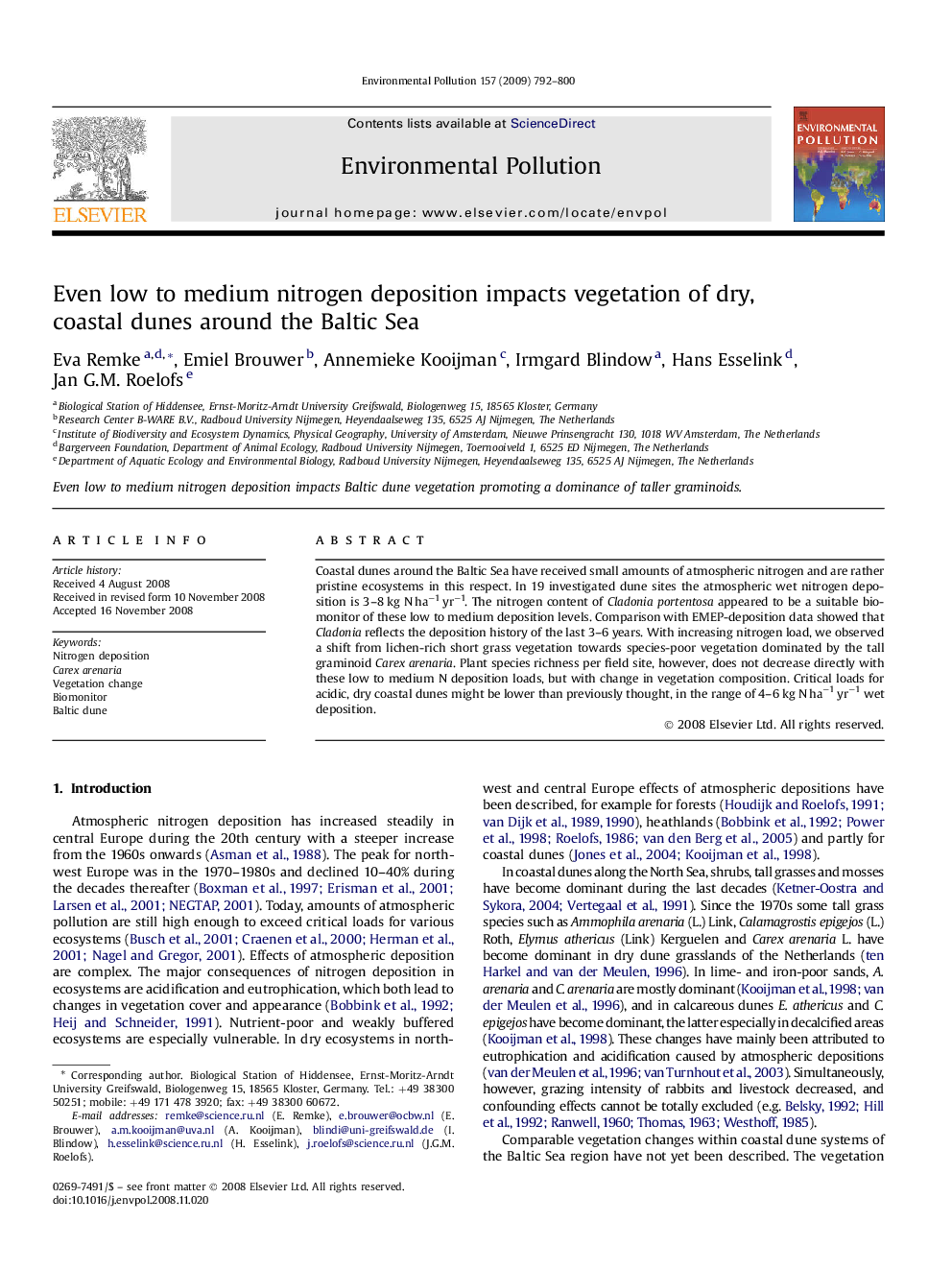| Article ID | Journal | Published Year | Pages | File Type |
|---|---|---|---|---|
| 4426586 | Environmental Pollution | 2009 | 9 Pages |
Coastal dunes around the Baltic Sea have received small amounts of atmospheric nitrogen and are rather pristine ecosystems in this respect. In 19 investigated dune sites the atmospheric wet nitrogen deposition is 3–8 kg N ha−1 yr−1. The nitrogen content of Cladonia portentosa appeared to be a suitable biomonitor of these low to medium deposition levels. Comparison with EMEP-deposition data showed that Cladonia reflects the deposition history of the last 3–6 years. With increasing nitrogen load, we observed a shift from lichen-rich short grass vegetation towards species-poor vegetation dominated by the tall graminoid Carex arenaria. Plant species richness per field site, however, does not decrease directly with these low to medium N deposition loads, but with change in vegetation composition. Critical loads for acidic, dry coastal dunes might be lower than previously thought, in the range of 4–6 kg N ha−1 yr−1 wet deposition.
